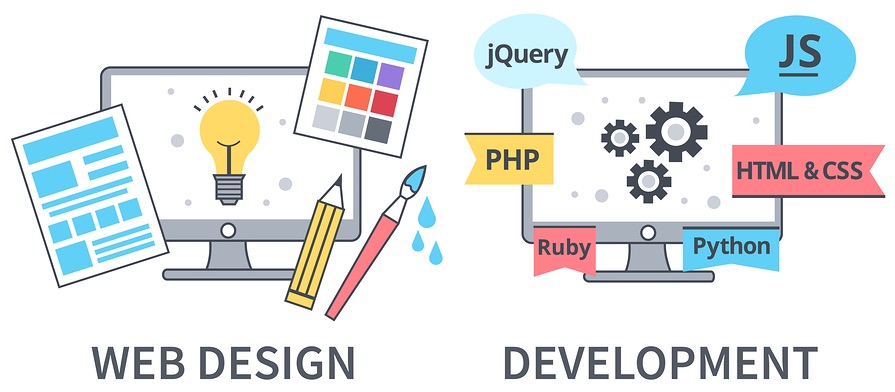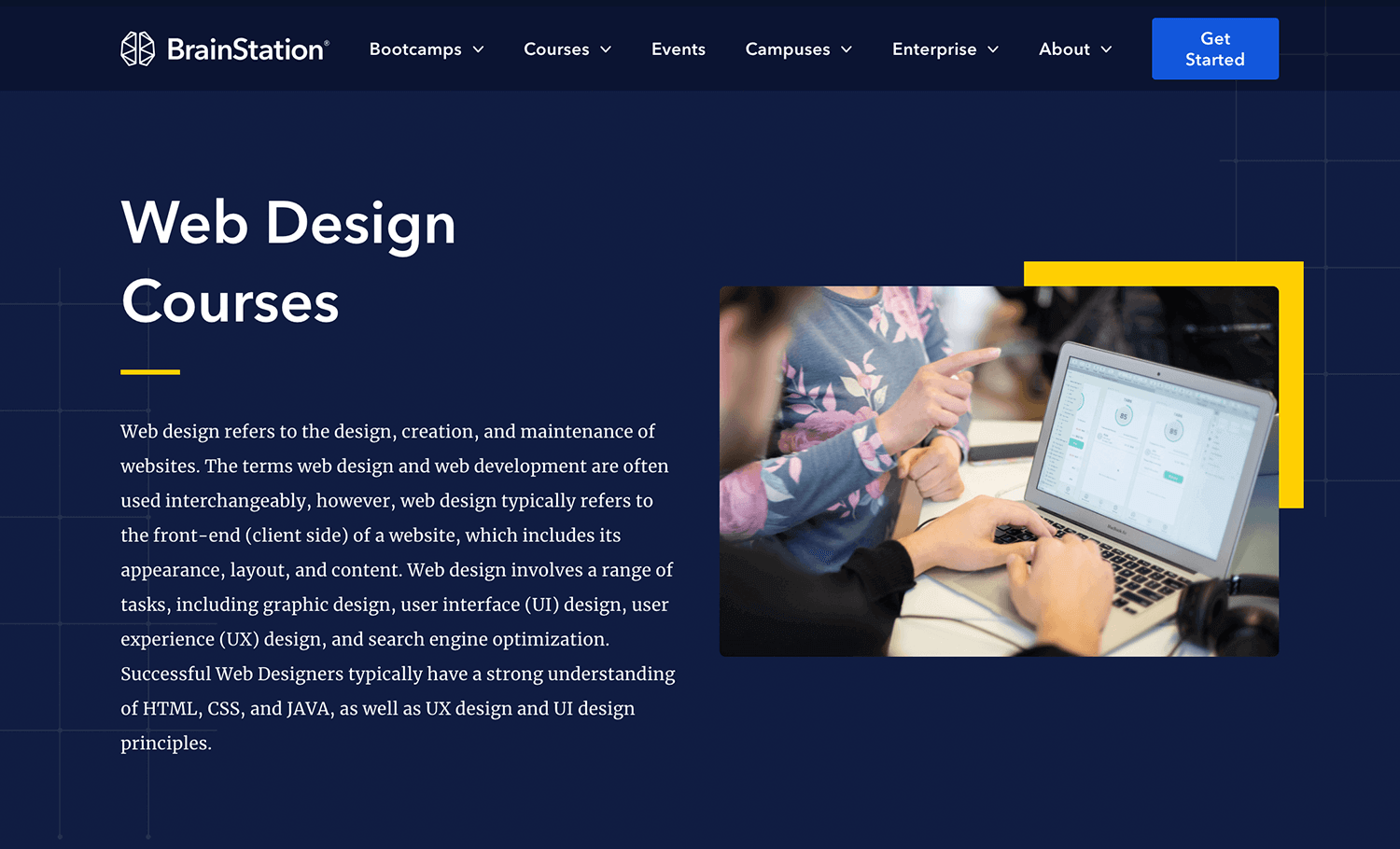The impact of website development in transforming user experience
Discovering the Numerous Kinds Of Web Layout and Their Unique Benefits
The landscape of website design incorporates a selection of designs, each offering distinctive benefits that satisfy various customer demands. Minimal and level styles highlight clearness, while receptive and worldly layouts enhance flexibility across devices. Illustratory and typography-driven approaches intend to boost engagement and emotional resonance. Recognizing these diverse types can significantly impact user experience and brand name assumption. What exists under the surface area of these style selections?
Minimal Website Design

Minimal website design usually includes a minimal color scheme and uncomplicated typography, which not just improves looks but also enhances brand name identity. The lowered complexity can result in much faster loading times, even more improving individual contentment. Furthermore, by lessening aesthetic clutter, users can involve with material better, resulting in enhanced understanding and retention. In general, minimalist website design promotes a seamless individual experience, making it a preferred choice for brands intending to communicate clearness and professionalism and trust in their on the internet presence.
Receptive Website Design
Responsive Web layout has actually become crucial in today's electronic landscape, ensuring mobile compatibility for individuals throughout numerous devices. This method greatly improves individual experience by supplying seamless navigating and availability, no matter of screen size. As more people access the Web on tablet computers and smart devices, the value of receptive design remains to expand.

Mobile Compatibility Relevance
As smart phone usage proceeds to increase, ensuring internet sites are suitable with numerous display sizes has actually come to be essential for efficient communication and interaction. Mobile compatibility, frequently achieved with responsive Web design, enables internet sites to adjust flawlessly to smartphones, tablet computers, and other tools. This versatility not just gets to a more comprehensive target market but additionally enhances brand credibility. A site that operates well on smart phones mirrors professionalism and reliability and interest to customer demands. In addition, online search engine focus on mobile-friendly websites in their rankings, making compatibility an essential element for online presence. By investing in mobile compatibility, companies can enhance their electronic existence and provide to the growing number of users that access information on the move. Prioritizing mobile-responsive layout is essential in today's electronic landscape.
Improved Individual Experience

Flat Layout
Flat design is a minimalist technique to website design that emphasizes simplicity and clearness. By removing three-dimensional components such as shadows, structures, and slopes, flat layout develops an aesthetically appealing user interface that focuses on material and capability. This style promotes an intuitive navigating experience, as individuals can promptly identify vital features and activities without diversion.
One of the primary advantages of flat style is its responsiveness across numerous gadgets and screen sizes. Its clean lines and straightforward formats adapt effortlessly, making certain a consistent experience for users on mobile, tablet, or desktop systems. In addition, flat style frequently incorporates vibrant colors and typography, enhancing aesthetic effect and brand recognition.
Moreover, the simpleness inherent in level layout leads to much faster loading times, which contributes positively to individual complete satisfaction - website development. In general, level layout continues to be a popular choice for contemporary Web development, lining up with modern aesthetic choices while supplying excellent usability
Product Design
Product Design stands for a layout language developed by Google that concentrates on developing a instinctive and natural customer experience throughout electronic platforms. This technique highlights the use of grid-based designs, receptive animations, and deepness results such as illumination and darkness, which help to develop a sense of pecking order and spatial connections. By imitating the real world, Product Design allows users to engage with electronic interfaces in a more engaging and natural manner.
Among the crucial advantages of Product Design is its flexibility throughout different gadgets and display sizes, ensuring a regular experience for individuals. Furthermore, it advertises a clear aesthetic language that enhances usability, making it easier for individuals to browse complicated applications. The incorporation of vibrant shades and strong typography also plays an essential duty in accentuating crucial elements, therefore enhancing general individual interaction - web development. Material Style has actually become a preferred selection amongst designers looking for to develop aesthetically attractive and useful web sites.
Typography-Driven Design
Typography-Driven Style concentrates on the strategic usage of type to boost the visual and practical aspects of a site. This style technique focuses on fonts, font sizes, spacing, and hierarchy to develop aesthetic rate of interest and overview customer experience. By very carefully picking typography, designers can communicate brand name identity and evoke emotions, making the content much more obtainable and interesting.
Effective typography enhances readability and use, making sure that users can quickly navigate the website and absorb info. The right mix of kind can likewise develop a clear visual hierarchy, enabling individuals to rapidly determine crucial messages and phones call to action.
A typography-driven technique can be adjusted to numerous gadgets, ensuring consistency across systems. This flexibility is important in today's multi-device landscape, where individual experience is extremely important. Eventually, Typography-Driven Design offers not just as an imaginative selection yet also as a practical aspect that significantly impacts a website's performance.
Illustratory Web Design
Illustrative Web layout utilizes aesthetic storytelling methods that can significantly enhance user involvement. By integrating special images, web sites can produce a memorable brand name identification that reverberates with their audience. This approach not just mesmerizes site visitors but additionally interacts messages in a visually compelling fashion.
Visual Narration Techniques
A multitude of Web developers employ visual storytelling techniques to produce immersive and appealing individual experiences. This technique incorporates typography, layout, and imagery to narrate a story that reverberates with individuals on an emotional level. By incorporating compelling visuals, developers can successfully convey messages and stimulate sensations, directing site visitors with a brand's journey. Infographics, animations, and interactive elements offer to boost narratives, making complicated info much more memorable and accessible. In addition, see page visual narration can develop a cohesive brand identification, as constant imagery and themes enhance core values and messages. Eventually, this technique not just mesmerizes users but additionally cultivates a much deeper connection with the web content, motivating exploration and retention. Via experienced application, visual storytelling changes common Web experiences right into purposeful and vibrant interactions.
Enhancing User Engagement
Reliable Web style significantly enhances customer engagement by leveraging illustratory aspects that attract interest and foster communication. Images can simplify intricate ideas, making them much more unforgettable and approachable for users. They break the monotony of text-heavy web pages, creating aesthetic breaks that invite exploration. Furthermore, special pictures can evoke emotions, urging users to get in touch with the web content on a wikipedia reference much deeper degree. Interactive elements, such as computer animations or float impacts, can additionally boost interaction by welcoming customers to take part proactively instead than passively consuming info. This strategy not just keeps site visitors on the site longer however additionally increases the chance of return gos to. Eventually, efficient illustratory website design changes the user experience, making it a lot more enjoyable and impactful.
Branding Via Image
Aesthetic components play a significant duty fit a brand's identity, and illustrations are an effective device in this respect. Illustrative website design allows brand names to communicate their one-of-a-kind individuality and worths via custom artwork. This approach fosters a much deeper emotional link with the audience, boosting memorability and engagement. By incorporating illustrations, brands can separate themselves in a jampacked market, producing a distinctive aesthetic story that resonates with their visit this site right here target demographic. Additionally, pictures can simplify intricate ideas and make material a lot more obtainable, properly connecting messages in an interesting way. Generally, branding with image not only enhances the customer experience however likewise enhances brand name acknowledgment, making it a beneficial method for companies intending to establish a solid on the internet visibility.
Often Asked Concerns
Just how Do I Choose the Right Website Design Kind for My Company?
To choose the ideal Web design type for a company, one need to analyze goals, target audience, and sector standards. Reviewing individual experience and capability will guide the option procedure for suitable engagement and efficiency.
What Equipment Are Best for Producing Various Web Layout Styles?
Popular tools for creating diverse Web layout styles consist of Adobe XD, Figma, Sketch, and WordPress. Each offers distinct attributes customized to different layout requirements, enabling designers to develop practical and aesthetically attractive sites effectively.
Just How Much Does Professional Web Layout Commonly Cost?
Professional website design normally costs between $2,000 and $10,000, relying on intricacy, features, and designer proficiency. Customized options and recurring upkeep might enhance expenses, while design templates can provide more budget-friendly alternatives for simpler projects.
Can I Incorporate Numerous Website Design Keys In Properly?
Yes, incorporating multiple Web style types can be reliable. By integrating aspects from different styles, developers can develop unique, interesting user experiences that deal with varied target markets while enhancing functionality and visual allure.
Just How Do Style Patterns Influence Individual Experience and Interaction?
Design trends substantially influence individual experience and interaction by improving aesthetic charm, boosting navigation, and cultivating emotional links - web design. Remaining upgraded with fads enables developers to develop user-friendly interfaces that reverberate with individuals and encourage long term interactions
Flat and minimal layouts emphasize quality, while responsive and worldly styles enhance convenience throughout devices. It may appear counterintuitive, minimal Web design stresses simplicity to improve user experience. Receptive Web design plays a vital role in improving user experience by making certain that a web site adapts effortlessly to various screen dimensions and devices. Flat layout is a minimalist technique to Web layout that highlights simpleness and quality. Material Layout stands for a layout language established by Google that concentrates on developing a natural and user-friendly user experience across digital platforms.